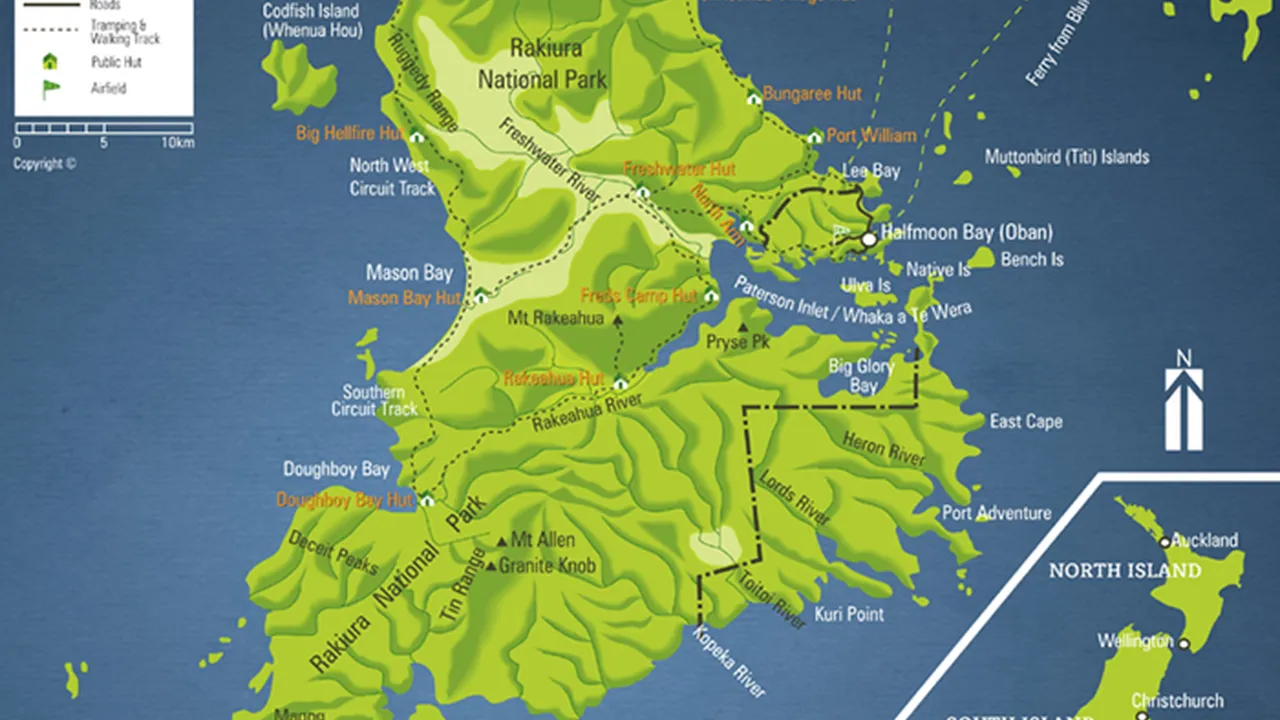Caving Adventures in the Nelson Region

Sample meta description.
Unearthing Nelson's Subterranean Secrets Caving in New Zealand
Alright, adventure junkies, listen up! You're thinking about New Zealand, you're thinking about stunning landscapes, maybe a bit of hobbiton action. But have you ever considered disappearing underground? Nelson region, nestled at the top of the South Island, is a freakin' caving paradise. We're talking glowworm grottos, epic rock formations, and challenges that'll make you feel like a legit explorer. Forget the tourist traps; this is where the real adventure is at. Let's dive in (pun intended!).
Gear Up For Your Underground Expedition Essential Caving Equipment
Okay, before you go all Indiana Jones on us, let's talk gear. You can't just waltz into a cave in your flip-flops (seriously, don't). Here's the lowdown on what you need to stay safe and comfortable:
- Helmet: Non-negotiable. Rocks fall, you fall, your head needs protecting. Get one specifically designed for caving; they're tougher than your average bike helmet.
- Headlamp: The sun doesn't shine underground, genius. A good headlamp is your lifeline. Opt for one with a high lumen output (at least 200 lumens) and long battery life. Bring spare batteries!
- Caving Suit or Overalls: Caves are often cold and damp. A durable, waterproof caving suit or overalls will keep you warm and dry. Think of it as your underground armor.
- Knee Pads: Trust me, you'll be doing a lot of crawling. Your knees will thank you.
- Gloves: Protect your hands from scrapes and cuts. Durable work gloves or caving gloves are ideal.
- Boots: Sturdy hiking boots with good ankle support are essential. Make sure they have good grip for slippery surfaces.
- Backpack: For carrying water, snacks, first-aid kit, and spare batteries.
- First-Aid Kit: A basic kit with bandages, antiseptic wipes, pain relievers, and any personal medications.
- Water and Snacks: Caving can be strenuous. Stay hydrated and fueled.
Headlamp Showdown Choosing the Right Light for Your Caving Adventure
Let's get serious about headlamps. Your life literally depends on it. Here are a few options and why they might be right for you:
- Petzl Actik Core: A solid all-arounder. Good brightness (450 lumens), long battery life, and rechargeable. Around $70 USD. Great for beginners and intermediate cavers. Its Hybrid Concept allows you to use the CORE rechargeable battery or three AAA batteries.
- Black Diamond Spot 400: Another excellent choice for beginners. It’s lightweight, durable, and provides 400 lumens of brightness. Around $40 USD. It's also very user-friendly.
- Fenix HM65R-T: For the serious caver. Super bright (1500 lumens), durable, and features both spot and flood beams. Around $100 USD. More expensive, but worth it if you're tackling challenging caves. This one also has a USB-C charging port, which is super convenient.
- Princeton Tec Apex Extreme: Built like a tank. Waterproof and extremely durable. Around $120 USD. If you're planning on doing a lot of wet caving, this is your best bet.
Comparison: The Petzl Actik Core and Black Diamond Spot 400 are both great entry-level options. The Fenix HM65R-T offers significantly more brightness and durability, but at a higher price point. The Princeton Tec Apex Extreme is the ultimate in durability and water resistance, making it ideal for wet caving environments.
Nelson Region Caving Hotspots Where to Explore
Nelson's got caves for days. Here are a few of the most popular and interesting spots:
- Ngarua Caves: Home to Moa bones and stunning formations. A guided tour is highly recommended. Located near Takaka Hill.
- Rawhiti Caves (also known as the Cathedral Caves): Massive entrance and beautiful formations. A relatively easy walk to the entrance.
- Harwoods Hole: A challenging vertical cave for experienced cavers only. Not for the faint of heart!
- Honeycomb Hill Caves: Part of the Oparara Arches, these caves are known for their unique honeycomb formations and glowworms.
Guided Tours vs. Solo Adventures Navigating Nelson's Caves Safely
So, should you go it alone or join a guided tour? Here's the deal:
- Guided Tours: Best for beginners or those wanting to learn more about the caves' history and geology. Guides provide safety briefings, equipment, and expert knowledge. Less stress, more learning.
- Solo Adventures: Only recommended for experienced cavers with proper training and equipment. You need to be able to navigate, rig ropes, and handle emergencies. More freedom, more responsibility.
Important Safety Tip: Always tell someone where you're going and when you expect to be back. Carry a personal locator beacon (PLB) in case of emergency.
Glowworm Magic Illuminating the Darkness of New Zealand Caves
One of the coolest things about caving in New Zealand is the chance to see glowworms. These bioluminescent larvae create a magical display of light in the darkness. It's like staring into a miniature galaxy. Remember to be respectful and avoid shining bright lights directly on the glowworms. They're sensitive creatures.
Caving Suit Selection Staying Warm and Dry Underground
Choosing the right caving suit can make or break your experience. Here are a few things to consider:
- Material: Look for durable, waterproof, and breathable materials like nylon or neoprene.
- Fit: The suit should be snug but not restrictive. You need to be able to move freely.
- Reinforcements: Check for reinforced knees, elbows, and seat. These areas take the most abuse.
- Pockets: Pockets are handy for storing small items like snacks, batteries, and a knife.
Product Recommendations:
- Palm Aleutian Drysuit: A high-end drysuit that will keep you completely dry in even the wettest caves. Around $800 USD.
- NRS Navigator Drysuit: Another excellent drysuit option with a good balance of performance and price. Around $700 USD.
- Kokatat Tempest Pant and Top: A more affordable option that provides good water resistance and breathability. Around $400 USD (for both).
The Art of Caving Photography Capturing the Underground World
Taking photos in caves can be challenging, but rewarding. Here are a few tips:
- Use a tripod: Long exposures are often necessary due to the low light.
- Use a remote shutter release: To avoid camera shake.
- Experiment with light painting: Use a flashlight to illuminate specific areas of the cave.
- Shoot in RAW format: This gives you more flexibility in post-processing.
Respecting the Environment Leave No Trace Caving Ethics
It's crucial to respect the fragile cave environment. Here are a few guidelines:
- Leave no trace: Pack out everything you pack in.
- Stay on designated trails: Avoid disturbing sensitive formations.
- Don't touch or remove anything: Rocks, formations, and artifacts should be left undisturbed.
- Minimize your impact: Be mindful of your movements and avoid causing damage.
Planning Your Nelson Caving Trip Accommodation and Logistics
Okay, you're stoked to go caving. Now for the nitty-gritty. Here's what you need to consider:
- Accommodation: Nelson and Takaka offer a range of accommodation options, from budget-friendly hostels to luxury hotels. Book in advance, especially during peak season.
- Transportation: Renting a car is the easiest way to get around the Nelson region. Some caves are only accessible by unsealed roads.
- Permits: Some caves may require permits. Check with the Department of Conservation (DOC) for more information.
- Weather: Nelson's weather can be unpredictable. Check the forecast before you go and be prepared for changes.
Beyond the Caves Exploring the Nelson Region
Nelson isn't just about caves. There's plenty more to see and do in the region:
- Abel Tasman National Park: Hike, kayak, or take a scenic cruise through this stunning park.
- Golden Bay: Relax on the beaches of Golden Bay and explore the Farewell Spit.
- Nelson Lakes National Park: Hike around the beautiful lakes and mountains of this park.
- Local Wineries and Breweries: Sample some of the region's finest wines and craft beers.
Caving Safety First Preventing Accidents Underground
Caving can be dangerous if you're not careful. Here are some essential safety tips:
- Never cave alone: Always go with a group of experienced cavers.
- Check the weather forecast: Avoid caving during heavy rain or flooding.
- Wear appropriate gear: Helmet, headlamp, caving suit, and sturdy boots are essential.
- Know your limits: Don't attempt caves that are beyond your skill level.
- Communicate with your group: Stay in contact and let each other know if you're having problems.
- Be aware of your surroundings: Watch out for falling rocks, slippery surfaces, and tight spaces.
- Carry a first-aid kit and know how to use it: Be prepared for minor injuries.
- Leave a trip plan with someone: Let them know where you're going and when you expect to be back.
Specific Product Recommendations for Caving Safety
- Personal Locator Beacon (PLB): ACR ResQLink View - Around $350 USD. This device sends a distress signal to search and rescue services in case of an emergency.
- Caving Knife: Spyderco Atlantic Salt - Around $120 USD. A reliable knife for cutting ropes or other materials.
- Emergency Blanket: SOL Emergency Blanket - Around $10 USD. Lightweight and compact, this blanket can help prevent hypothermia.
Advanced Caving Techniques Rope Work and Navigation
For experienced cavers, mastering rope work and navigation is essential for tackling more challenging caves.
- Single Rope Technique (SRT): Learn how to ascend and descend ropes using specialized equipment.
- Navigation: Use a compass, map, and GPS to navigate through complex cave systems.
- Rigging: Learn how to safely rig ropes for vertical sections.
Caving Etiquette Being a Responsible Caver
Caving etiquette is all about respecting the environment and other cavers.
- Don't litter: Pack out everything you pack in.
- Be quiet: Avoid making loud noises that could disturb wildlife or other cavers.
- Share the cave: Be courteous to other cavers and allow them to pass.
- Respect the cave: Don't touch or damage anything.
- Report any problems: If you see any damage or hazards, report them to the appropriate authorities.
:max_bytes(150000):strip_icc()/277019-baked-pork-chops-with-cream-of-mushroom-soup-DDMFS-beauty-4x3-BG-7505-5762b731cf30447d9cbbbbbf387beafa.jpg)






